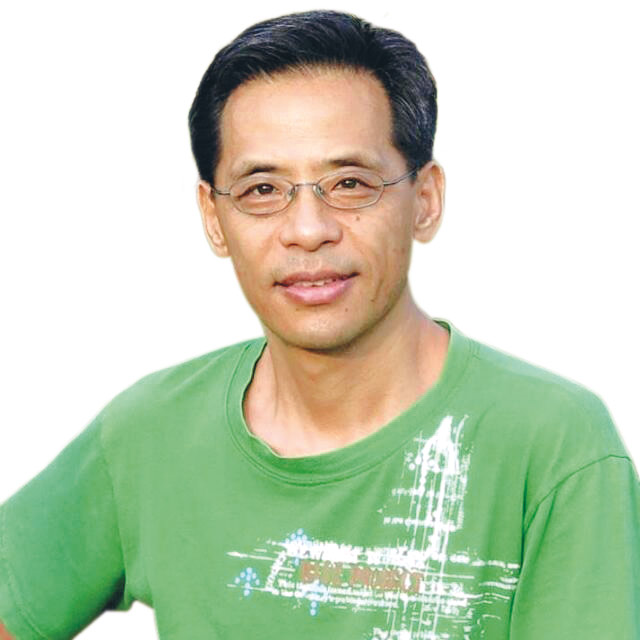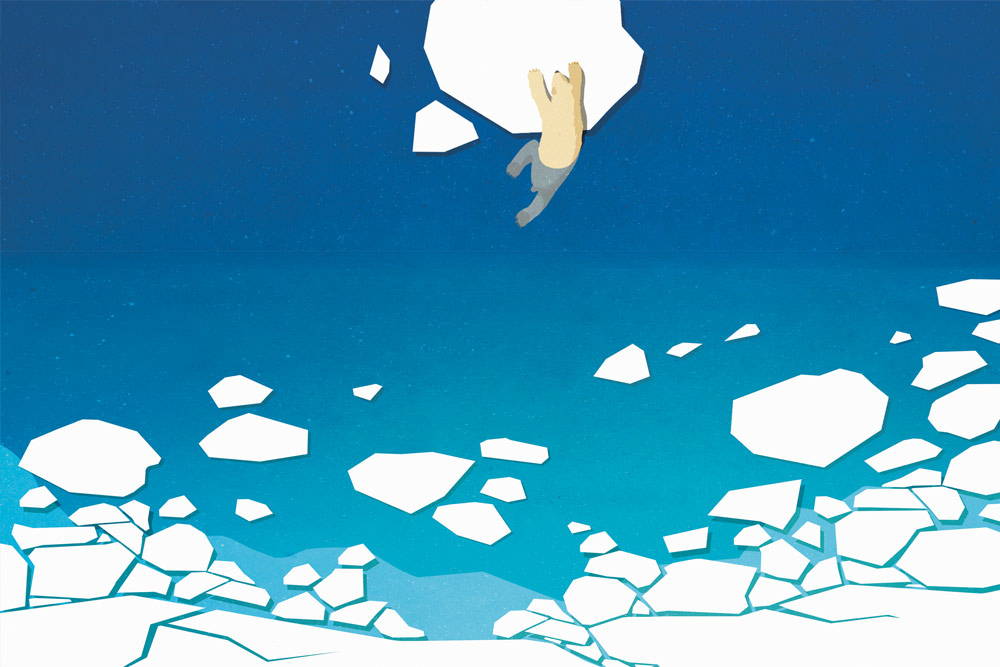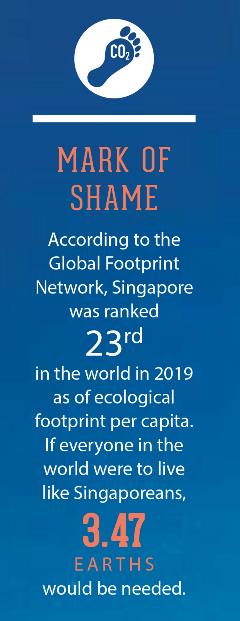The Road from Wastefulness to Zero Waste
Just what is required of us in the bid to reduce our carbon footprint, so as to ensure a sustainable future? Mr Bu Fan (Design and Environment ’07) looks at how far we still have to go in order to make this a reality.

Mr Bu Fan graduated from the Master of Science (Environmental Management) (MEM) programme in 2007, and currently chairs the NUS MEM Alumni Group. Mr Bu works at Mitsubishi Electric Asia’s Environmental Strategy Department as a Deputy General Manager. Prior to that, he worked as the Sustainability Manager for IKEA Alexandra.


Here’s the grim truth: Despite what the naysayers may claim, the evidence points to the unequivocal fact that climate change is very real — and we in Singapore are feeling the heat, literally. In recent months we’ve flocked to the comfort of air-conditioned spaces as the country experienced yet another prolonged bout of hot weather. According to the Meteorological Service Singapore (MSS) of the National Environment Agency (NEA), May 2019’s mean monthly temperature was among the highest since temperature records began in 1929. This was actually predicted by Dr Muhammad Eeqmal Hassim, senior research scientist with the MSS Centre for Climate Research Singapore, as reported by the local media earlier this year. Climate change and the El Niño effect were cited as the main reasons.
But instead of sweating in silence, why don’t we do something to remedy the situation instead? After all, Singapore designated 2018 as the Year of Climate Action in order to raise public awareness on the need to take collective action to reduce our carbon footprint. There were many government-organised and ground-up activities that sought to reach out to the public and inspire change. Yet, as I observed among my friends and colleagues, many of us were not aware of these at all.
Following Climate Action, the Ministry of the Environment and Water Resources (MEWR) designated 2019 as the Year Towards Zero Waste — a mounting issue that needs tackling. That’s because the amount of waste disposed in Singapore has increased seven-fold over the past 40 years. In 2017, 7.7 million tonnes of waste was generated, and more than 2,000 tonnes of incineration ash and non-incinerable waste is sent to our only landfill at Semakau Island daily. At the current rate of waste growth, the Semakau site will run out of space by 2035. This is an unacceptable scenario in land-scarce Singapore.
First-World Frivolity
Call it the curse of progress, but the reality is this: as a nation, we achieved prosperity not so long ago, and this has brought about issues of its own. Our parents and grandparents grew up frugally. Today, given our affluence, we consume excessively and dispose of unwanted items without sparing a second thought. A glance into almost any waste or recycling bin of any size provides evidence. On one occasion, I passed by a warehouse-like facility in an industrial building. Scattered about the space were large numbers of used items ranging from furniture to home appliances. A staff from an adjacent unit told me those were unwanted household items, mainly collected and then brought in by logistics service providers after being discarded by people who had relocated or had decided to redecorate their homes. What particularly surprised this staff, a young Malaysian man, was the fact that the majority of these items were fully functional and still looked new, and yet their Singaporean owners saw it fit to discard them.
Another example is our love of plastic bags — and for that matter, paper bags and other packaging materials from our shopping experiences. Plastic bags indeed play a role in our daily life, but we take or are given far too many, far too generously. If we don’t drastically change our mindset and behaviour, the journey towards zero waste will be a very, very long one.
Despite not really contributing to waste volume and landfill, energy and water wastages are other areas in which we are guilty as charged. Generating energy and clean water means consuming fuels and pumping greenhouse gases into the atmosphere, resulting in climate change. Our national water agency PUB has been communicating to the public via different channels to lower our water consumption from 143 litres in 2017 to 130 litres per person per day by 2030. The government also introduced a carbon tax effective from 1 January 2019. Hopefully, these measures will see more of us taking smarter showers and turning off lights and air-conditioners when not in use.
Today, given our affluence, we consume excessively and dispose of unwanted items without sparing a thought.
Sowing The Seeds of Sustainability
Back at the NUS campus, various environmental sustainability initiatives have been introduced in a bid to cement the University’s position as an architect of change on this front. On the academic side, there is the Master of Science (Environmental Management) (MEM) programme, a multi-disciplinary integrated programme jointly conducted by nine faculties and schools and hosted by the School of Design and Environment (SDE) that was inaugurated in 2001. The Bachelor of Environmental Studies — a course jointly hosted by the Faculty of Science and the Faculty of Arts and Social Sciences — has been offered since 2011. In addition, there is the Bachelor of Environmental Engineering.
On the administration side, the University has an Office of Environmental Sustainability (OES). OES organised the NUS Climate Action Month in 2018. This year, it started the ‘sustainABLE NUS Staff Challenge’ campaign from 1 January 2019. On their part, NUS students have formed more than a dozen groups that focus on different environmental topics, such as NUS SAVE, or Students Against Violation of the Earth. SDE officially launched Singapore’s first new-build net-zero energy building, named SDE4, in January 2019. In NUS President Professor Tan Eng Chye’s (Science ’85) words, SDE4 is “a testament to the University’s continuous efforts to incorporate sustainability in various aspects of campus life — from operations, planning, construction, research and education.”
As an institution, NUS is at the forefront of environmental sustainability. But how will all the messages be embraced by the NUS community and beyond, and drive behavioural changes that will lessen our environmental footprint? It is not an easy task, especially when it means trading some time and convenience in the face of our ever-quickening pace of life. The Sustainable Singapore Blueprint 2015 movement launched by MEWR outlines our national vision and plans for a more liveable and sustainable Singapore. This blueprint is a plan for action and provides everyone a unique opportunity to work together to create a better home, environment and future that we can all be proud of. We need continuous efforts by all sectors of our society, in terms of policymaking, awareness-building, role model-setting and many more.
In his article ‘The Singapore Paradox: Going Forward and Standing Still - All at Once’ published by The AlumNUS, Professor Kishore Mahbubani (Arts and Social Sciences ’71) wrote, ‘Amazingly, despite our well-educated population, we do not lead the pack when it comes to global citizenship in the environmental realm.’ He ended the article with the line ‘Let us become the most enlightened citizens of Southeast Asia.’ So let us then aim to go further, and become the most environmentally-enlightened citizens on planet Earth.
To get in touch with the MEM Alumni Group, please email mem-alumni@u.nus.edu.